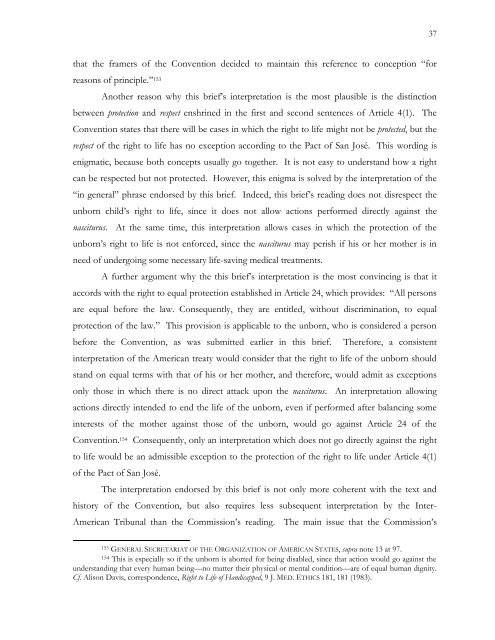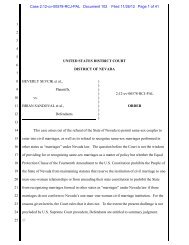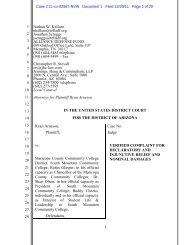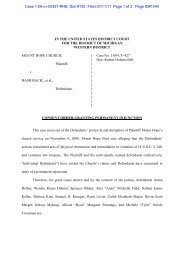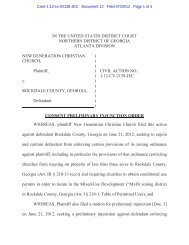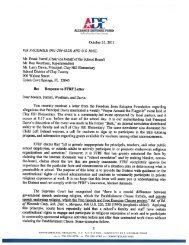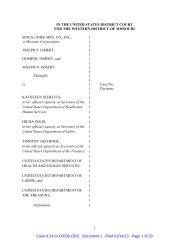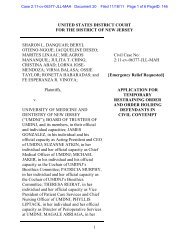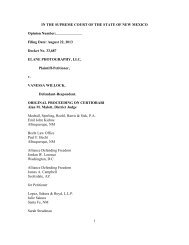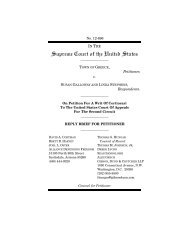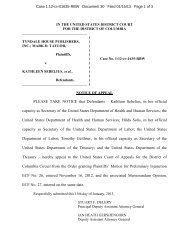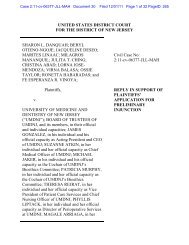English - Alliance Defending Freedom Media
English - Alliance Defending Freedom Media
English - Alliance Defending Freedom Media
You also want an ePaper? Increase the reach of your titles
YUMPU automatically turns print PDFs into web optimized ePapers that Google loves.
37<br />
that the framers of the Convention decided to maintain this reference to conception “for<br />
reasons of principle.” 153<br />
Another reason why this brief’s interpretation is the most plausible is the distinction<br />
between protection and respect enshrined in the first and second sentences of Article 4(1). The<br />
Convention states that there will be cases in which the right to life might not be protected, but the<br />
respect of the right to life has no exception according to the Pact of San José. This wording is<br />
enigmatic, because both concepts usually go together. It is not easy to understand how a right<br />
can be respected but not protected. However, this enigma is solved by the interpretation of the<br />
“in general” phrase endorsed by this brief. Indeed, this brief’s reading does not disrespect the<br />
unborn child’s right to life, since it does not allow actions performed directly against the<br />
nasciturus. At the same time, this interpretation allows cases in which the protection of the<br />
unborn’s right to life is not enforced, since the nasciturus may perish if his or her mother is in<br />
need of undergoing some necessary life-saving medical treatments.<br />
A further argument why the this brief’s interpretation is the most convincing is that it<br />
accords with the right to equal protection established in Article 24, which provides: “All persons<br />
are equal before the law. Consequently, they are entitled, without discrimination, to equal<br />
protection of the law.” This provision is applicable to the unborn, who is considered a person<br />
before the Convention, as was submitted earlier in this brief. Therefore, a consistent<br />
interpretation of the American treaty would consider that the right to life of the unborn should<br />
stand on equal terms with that of his or her mother, and therefore, would admit as exceptions<br />
only those in which there is no direct attack upon the nasciturus. An interpretation allowing<br />
actions directly intended to end the life of the unborn, even if performed after balancing some<br />
interests of the mother against those of the unborn, would go against Article 24 of the<br />
Convention. 154 Consequently, only an interpretation which does not go directly against the right<br />
to life would be an admissible exception to the protection of the right to life under Article 4(1)<br />
of the Pact of San José.<br />
The interpretation endorsed by this brief is not only more coherent with the text and<br />
history of the Convention, but also requires less subsequent interpretation by the Inter-<br />
American Tribunal than the Commission’s reading. The main issue that the Commission’s<br />
153 GENERAL SECRETARIAT OF THE ORGANIZATION OF AMERICAN STATES, supra note 13 at 97.<br />
154 This is especially so if the unborn is aborted for being disabled, since that action would go against the<br />
understanding that every human being—no matter their physical or mental condition—are of equal human dignity.<br />
Cf. Alison Davis, correspondence, Right to Life of Handicapped, 9 J. MED. ETHICS 181, 181 (1983).


